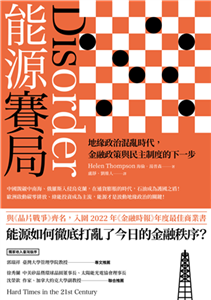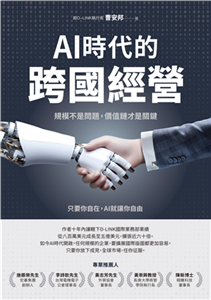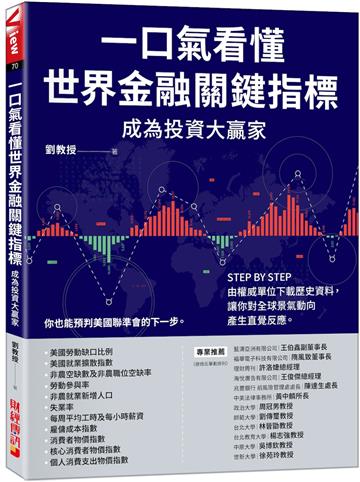商品簡介
目次
相關商品
商品簡介
《混凝土與可持續發展》全面分析了世界混凝土可持續發展所面臨挑戰的複雜性和應對方案的多樣性。第一章主要從混凝土對社會與經濟發展的作用和影響的角度對混凝土可持續性問題進行了探討;第二章重點介紹國際範圍內混凝土可持續發展所涉及的環境評價工具和方法論,並分析了不同的關注焦點、評價方法和時限對混凝土可持續性的影響;第三、四章著重分析了水泥混凝土領域所面臨的排放、捕集與吸收和循環的挑戰;第五章分析了其他方面的環境挑戰;第六、七章給出了綜合評述及未來發展趨勢的分析;最後列出了500多條參考文獻,以供有興趣的讀者深度查閱。
《混凝土與可持續發展》主要探討在全球範圍內提升混凝土可持續性的系統思考方法和技術途徑,以此鼓勵和幫助有興趣的讀者(包括政策制定者,建築與材料領域的專家、工程師,高等學校的教授、學生,以及致力於環境與可持續發展領域的人員等)針對混凝土可持續發展所面臨的問題,用系統方法論對其資源可獲取性、技術與經濟可行性、環境相容性以及社會責任等要素進行全方位的思考和行動。
《混凝土與可持續發展》主要探討在全球範圍內提升混凝土可持續性的系統思考方法和技術途徑,以此鼓勵和幫助有興趣的讀者(包括政策制定者,建築與材料領域的專家、工程師,高等學校的教授、學生,以及致力於環境與可持續發展領域的人員等)針對混凝土可持續發展所面臨的問題,用系統方法論對其資源可獲取性、技術與經濟可行性、環境相容性以及社會責任等要素進行全方位的思考和行動。
目次
Foreword by V. Mohan Malhotra xi
Foreword by Wei Sun xiii
Preface xv
Acknowledgements xvii
The authors xix
1 Introduction
1.1 The economical impact of concrete
1.2 Concrete and social progress
2 Environmental issues
2.1 Global/regional/local aspects
2.2 Rating systems
2.3 Evaluation systems/tools
2.4 ISO methodology/standards
2.5 Variation in focus
2.5.1 Different sectors of the concrete industry tend to focus on different aspects
2.5.2 Focus: Lifetime expectancy perspectives
2.5.3 Focus:
2.5.4 Focus:
2.6 Traditions/testing
2.6.1 Example
2.6.2 Example
2.6.3 Example
3 Emissions and absorptions
3.1 General
3.2 CO2 emission from cement and concrete production
3.3 Emission of other greenhouse gases
3.4 Absorption/carbonation
3.5 The tools and possible actions
3.5.1 Increased utilisation of supplementary cementing materials
3.5.2 Fly ash
3.5.3 Blast furnace slag
3.5.4 Silica fume
3.5.5 Metakaolin
3.5.6 Rice husk ash (RHA)
3.5.7 Natural pozzolans
3.5.8 Other ashes and slags
3.5.8.1 Sewage sludge incineration ash (SSIA)
3.5.8.2 Ferroalloy slag
3.5.8.3 Barium and strontium slag
3.5.8.4 Other types of slag
3.5.8.5 Ashes from co-combustion
3.5.8.6 Wood ash
3.5.8.7 Fluidised bed ash
3.5.9 Limestone powder
3.5.10 Other supplementary cementitious materials
3.5.11 Improvements and more efficient cement production
3.5.12 New/other types of cement/binders
3.5.12.1 High-belite cement(HBC)
3.5.12.2 Sulphur concrete
3.5.13 Increased carbonation
3.5.14 Better energy efficiency in buildings
3.5.15 Improved mixture design/packing technology/water reduction
3.5.16 Increased building flexibility, and more sustainable design and recycling practice
3.5.17 Miscellaneous
3.5.17.1 Production restrictions
3.5.17.2 The testing regime
3.5.18 Carbon capture and storage (CCS)
3.5.18.1 Capture
3.5.18.2 Storage
3.6 Variation in focus
3.6.1 Focus 1: Lifetime expectancy perspective
3.6.2 Focus 2:
3.6.3 Focus 3:
3.7 Some conclusions
4 Recycling
4.1 Recycling of concrete
4.1.1 Norway
4.1.2 Japan
4.1.3 The Netherlands
4.1.4 Hong Kong, China
4.1.5 General
4.1.5.1 Processing technology
4.1.5.2 Fines
4.2 Recycling of other materials as aggregate in concrete
4.2.1 Used rubber tires in concrete
4.2.2 Aggregate manufactured from fines
4.2.3 Processed sugar cane ash
4.2.4 Recycled plastic, e.g., bottles
4.2.5 Hempcrete and other “straw concretes”
4.2.6 Papercrete
4.2.7 Oil palm shell lightweight concrete
4.2.8 Glass concrete
4.2.9 Paper mill ash for self-compacting concrete (SCC)
4.2.10 Slag
4.2.11 Recycling of “doubtful” waste as aggregate
4.2.12 Iron mine mill waste (mill tailings)
4.2.13 Bauxite residue/red sand
4.2.14 Copper slag
4.2.15 Other materials
4.2.16 Waste latex paint
4.2.17 Fillers for self-compacting concrete
4.3 Recycling of other materials as reinforcement in concrete
4.4 Recycling of other materials as binders in concrete
4.4.1 Waste glass
4.4.2 Recycling of fluid catalytic cracking catalysts
4.5 Recycling of cement kiln dust (CKD)
5 The environmental challenges―other items
5.1 Aggregate shortage
5.2 Durability/longevity
5.3 Energy savings
5.4 Health
5.4.1 Skin burn
5.4.2 The chromium challenge
5.4.3 Compaction by vibration
5.4.4 Dust
5.4.5 Emission and moisture in concrete
5.4.6 Form oil
5.4.7 NOx-absorbing concrete
5.4.7.1 General
5.4.7.2 Principle of reaction
5.4.7.3 The catalyst
5.4.7.4 The effects
5.4.7.5 Concrete―product areas
5.4.7.6 Other experiences
5.4.7.7 Climate change and health
5.5 Leakage
5.5.1 General
5.5.2 Leakage of pollutants from cement and concrete
5.5.2.1 Leakage from the cement manufacture process
5.5.2.2 Leakage from concrete
5.5.3 Concrete to prevent leakage
5.6 Noise pollution
5.6.1 Noise reduction in concrete production
5.6.2 Noise reduction from traffic
5.6.3 Reduction of noise pollution in buildings
5.6.4 Step sound reduction in stairways
5.7 Radiation
5.7.1 Effects of radioactive radiation on the human body
5.7.1.1 Alpha particles (or alpha radiation)
5.7.1.2 Beta particles
5.7.1.3 X-rays and gamma rays
5.7.2 Natural radioactivity in building materials
5.7.3 Radiation from cement and concrete
5.7.4 Radioactivity risk reduction with cement and concrete
5.7.4.1 Concrete as a shield of radiation
5.7.4.2 Encapsulation of radioactive materials with cement and concrete
5.7.5 Clearance of radioactive concrete
5.8 Safety
5.8.1 Concrete as a safety tool
5.8.2 Concrete safety levels in a climate change perspective
5.9 Water
5.9.1 Water shortage
5.9.2 Managing the increased precipitation
5.9.2.1 Pervious concrete
5.9.2.2 Pervious ground with concrete paver systems
5.9.2.3 Delaying systems
5.9.3 Reuse of wash water from concrete production
5.9.4 Escape of wash water from concrete production to freshwater and the sea
5.9.5 Food supply―artificial fish reefs (AFRs)
5.9.5.1 History
5.9.5.2 Where have AFRs been used?
5.9.5.3 Motivations for establishing AFRs
5.9.5.4 Design factors
5.9.5.5 Some examples
5.9.5.6 Restoration of coral reefs
5.9.5.7 The Tjuvholmen project
5.9.6 Erosion protection
5.10 Wastes
6 New possibilities and challenges
6.1 Small hydroelectric power stations
6.2 Windmills
6.3 New raw materials/low energy and low CO2 cements
6.3.1 Principle for clinker composition design
6.3.2 Lower energy and low-emission clinker preparation
6.3.3 Performance evaluation of HBC
6.3.3.1 Strength
6.3.3.2 Heat evolution characteristics
6.3.3.3 Chemical corrosion resistance
6.3.3.4 Drying shrinkage
6.3.3.5 Existing standards for HBC
6.3.3.6 Simplified explanation for the excellent performance of HBC
6.3.4 Latest results on belite-calcium Sulfoaluminate (BCSA) cement
6.4 New concrete products and components
7 The future
References
Index
Foreword by Wei Sun xiii
Preface xv
Acknowledgements xvii
The authors xix
1 Introduction
1.1 The economical impact of concrete
1.2 Concrete and social progress
2 Environmental issues
2.1 Global/regional/local aspects
2.2 Rating systems
2.3 Evaluation systems/tools
2.4 ISO methodology/standards
2.5 Variation in focus
2.5.1 Different sectors of the concrete industry tend to focus on different aspects
2.5.2 Focus: Lifetime expectancy perspectives
2.5.3 Focus:
2.5.4 Focus:
2.6 Traditions/testing
2.6.1 Example
2.6.2 Example
2.6.3 Example
3 Emissions and absorptions
3.1 General
3.2 CO2 emission from cement and concrete production
3.3 Emission of other greenhouse gases
3.4 Absorption/carbonation
3.5 The tools and possible actions
3.5.1 Increased utilisation of supplementary cementing materials
3.5.2 Fly ash
3.5.3 Blast furnace slag
3.5.4 Silica fume
3.5.5 Metakaolin
3.5.6 Rice husk ash (RHA)
3.5.7 Natural pozzolans
3.5.8 Other ashes and slags
3.5.8.1 Sewage sludge incineration ash (SSIA)
3.5.8.2 Ferroalloy slag
3.5.8.3 Barium and strontium slag
3.5.8.4 Other types of slag
3.5.8.5 Ashes from co-combustion
3.5.8.6 Wood ash
3.5.8.7 Fluidised bed ash
3.5.9 Limestone powder
3.5.10 Other supplementary cementitious materials
3.5.11 Improvements and more efficient cement production
3.5.12 New/other types of cement/binders
3.5.12.1 High-belite cement(HBC)
3.5.12.2 Sulphur concrete
3.5.13 Increased carbonation
3.5.14 Better energy efficiency in buildings
3.5.15 Improved mixture design/packing technology/water reduction
3.5.16 Increased building flexibility, and more sustainable design and recycling practice
3.5.17 Miscellaneous
3.5.17.1 Production restrictions
3.5.17.2 The testing regime
3.5.18 Carbon capture and storage (CCS)
3.5.18.1 Capture
3.5.18.2 Storage
3.6 Variation in focus
3.6.1 Focus 1: Lifetime expectancy perspective
3.6.2 Focus 2:
3.6.3 Focus 3:
3.7 Some conclusions
4 Recycling
4.1 Recycling of concrete
4.1.1 Norway
4.1.2 Japan
4.1.3 The Netherlands
4.1.4 Hong Kong, China
4.1.5 General
4.1.5.1 Processing technology
4.1.5.2 Fines
4.2 Recycling of other materials as aggregate in concrete
4.2.1 Used rubber tires in concrete
4.2.2 Aggregate manufactured from fines
4.2.3 Processed sugar cane ash
4.2.4 Recycled plastic, e.g., bottles
4.2.5 Hempcrete and other “straw concretes”
4.2.6 Papercrete
4.2.7 Oil palm shell lightweight concrete
4.2.8 Glass concrete
4.2.9 Paper mill ash for self-compacting concrete (SCC)
4.2.10 Slag
4.2.11 Recycling of “doubtful” waste as aggregate
4.2.12 Iron mine mill waste (mill tailings)
4.2.13 Bauxite residue/red sand
4.2.14 Copper slag
4.2.15 Other materials
4.2.16 Waste latex paint
4.2.17 Fillers for self-compacting concrete
4.3 Recycling of other materials as reinforcement in concrete
4.4 Recycling of other materials as binders in concrete
4.4.1 Waste glass
4.4.2 Recycling of fluid catalytic cracking catalysts
4.5 Recycling of cement kiln dust (CKD)
5 The environmental challenges―other items
5.1 Aggregate shortage
5.2 Durability/longevity
5.3 Energy savings
5.4 Health
5.4.1 Skin burn
5.4.2 The chromium challenge
5.4.3 Compaction by vibration
5.4.4 Dust
5.4.5 Emission and moisture in concrete
5.4.6 Form oil
5.4.7 NOx-absorbing concrete
5.4.7.1 General
5.4.7.2 Principle of reaction
5.4.7.3 The catalyst
5.4.7.4 The effects
5.4.7.5 Concrete―product areas
5.4.7.6 Other experiences
5.4.7.7 Climate change and health
5.5 Leakage
5.5.1 General
5.5.2 Leakage of pollutants from cement and concrete
5.5.2.1 Leakage from the cement manufacture process
5.5.2.2 Leakage from concrete
5.5.3 Concrete to prevent leakage
5.6 Noise pollution
5.6.1 Noise reduction in concrete production
5.6.2 Noise reduction from traffic
5.6.3 Reduction of noise pollution in buildings
5.6.4 Step sound reduction in stairways
5.7 Radiation
5.7.1 Effects of radioactive radiation on the human body
5.7.1.1 Alpha particles (or alpha radiation)
5.7.1.2 Beta particles
5.7.1.3 X-rays and gamma rays
5.7.2 Natural radioactivity in building materials
5.7.3 Radiation from cement and concrete
5.7.4 Radioactivity risk reduction with cement and concrete
5.7.4.1 Concrete as a shield of radiation
5.7.4.2 Encapsulation of radioactive materials with cement and concrete
5.7.5 Clearance of radioactive concrete
5.8 Safety
5.8.1 Concrete as a safety tool
5.8.2 Concrete safety levels in a climate change perspective
5.9 Water
5.9.1 Water shortage
5.9.2 Managing the increased precipitation
5.9.2.1 Pervious concrete
5.9.2.2 Pervious ground with concrete paver systems
5.9.2.3 Delaying systems
5.9.3 Reuse of wash water from concrete production
5.9.4 Escape of wash water from concrete production to freshwater and the sea
5.9.5 Food supply―artificial fish reefs (AFRs)
5.9.5.1 History
5.9.5.2 Where have AFRs been used?
5.9.5.3 Motivations for establishing AFRs
5.9.5.4 Design factors
5.9.5.5 Some examples
5.9.5.6 Restoration of coral reefs
5.9.5.7 The Tjuvholmen project
5.9.6 Erosion protection
5.10 Wastes
6 New possibilities and challenges
6.1 Small hydroelectric power stations
6.2 Windmills
6.3 New raw materials/low energy and low CO2 cements
6.3.1 Principle for clinker composition design
6.3.2 Lower energy and low-emission clinker preparation
6.3.3 Performance evaluation of HBC
6.3.3.1 Strength
6.3.3.2 Heat evolution characteristics
6.3.3.3 Chemical corrosion resistance
6.3.3.4 Drying shrinkage
6.3.3.5 Existing standards for HBC
6.3.3.6 Simplified explanation for the excellent performance of HBC
6.3.4 Latest results on belite-calcium Sulfoaluminate (BCSA) cement
6.4 New concrete products and components
7 The future
References
Index
主題書展
更多
主題書展
更多書展今日66折
您曾經瀏覽過的商品
購物須知
大陸出版品因裝訂品質及貨運條件與台灣出版品落差甚大,除封面破損、內頁脫落等較嚴重的狀態,其餘商品將正常出貨。
特別提醒:部分書籍附贈之內容(如音頻mp3或影片dvd等)已無實體光碟提供,需以QR CODE 連結至當地網站註冊“並通過驗證程序”,方可下載使用。
無現貨庫存之簡體書,將向海外調貨:
海外有庫存之書籍,等候約45個工作天;
海外無庫存之書籍,平均作業時間約60個工作天,然不保證確定可調到貨,尚請見諒。
為了保護您的權益,「三民網路書店」提供會員七日商品鑑賞期(收到商品為起始日)。
若要辦理退貨,請在商品鑑賞期內寄回,且商品必須是全新狀態與完整包裝(商品、附件、發票、隨貨贈品等)否則恕不接受退貨。
























